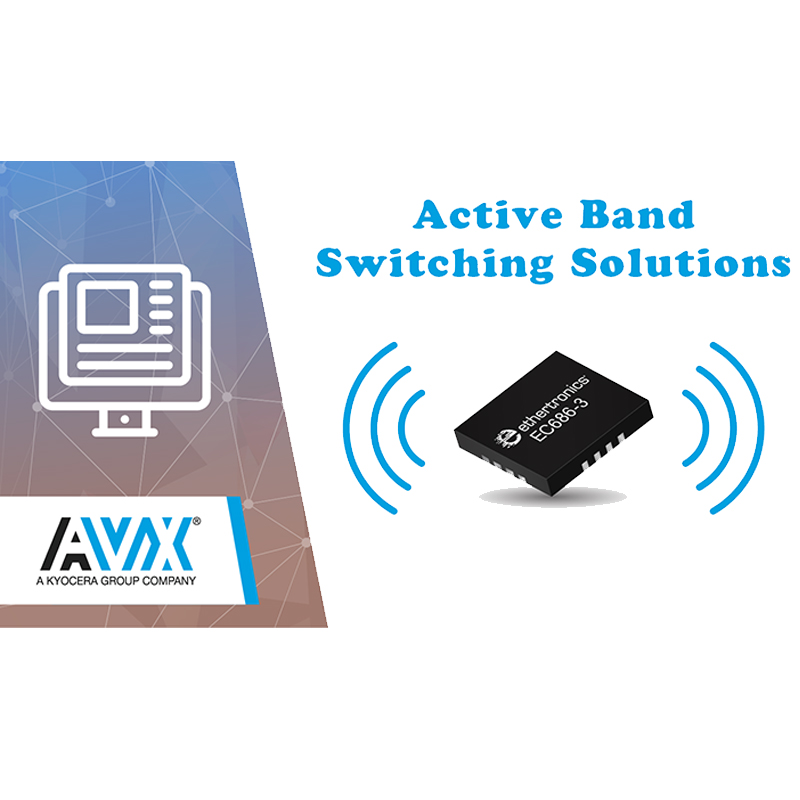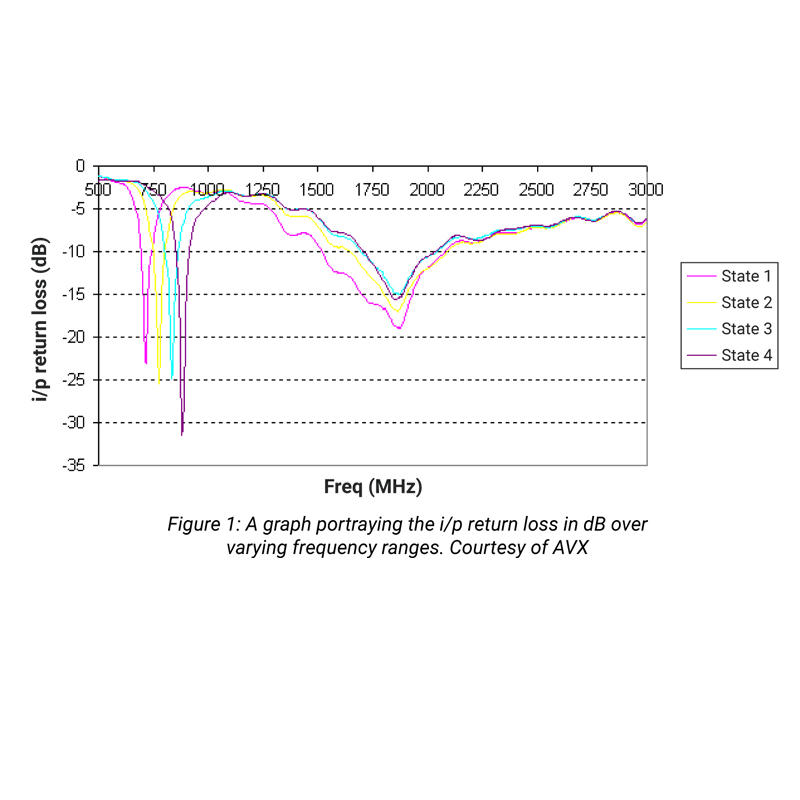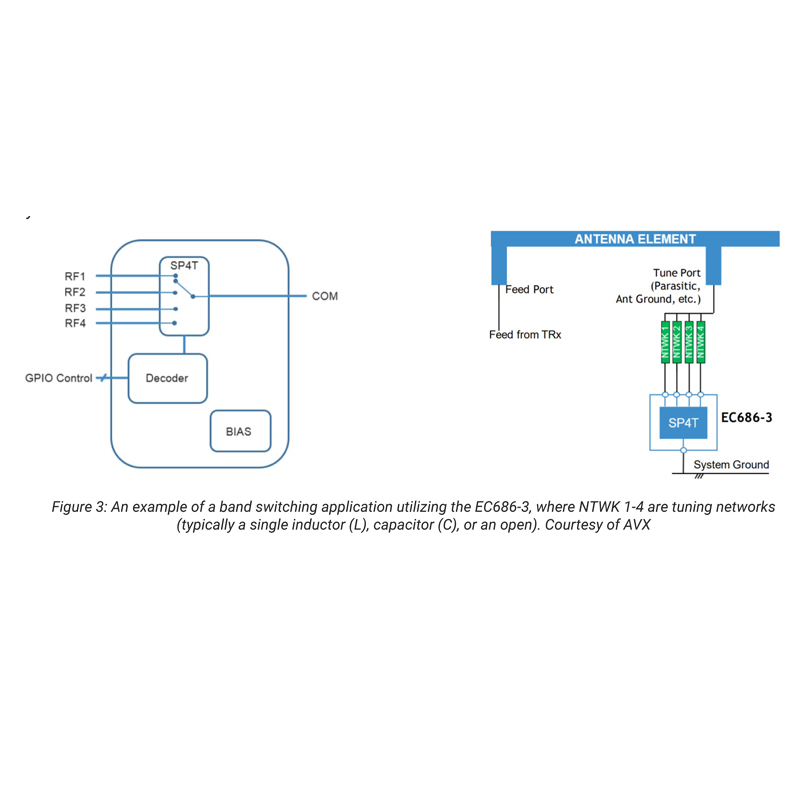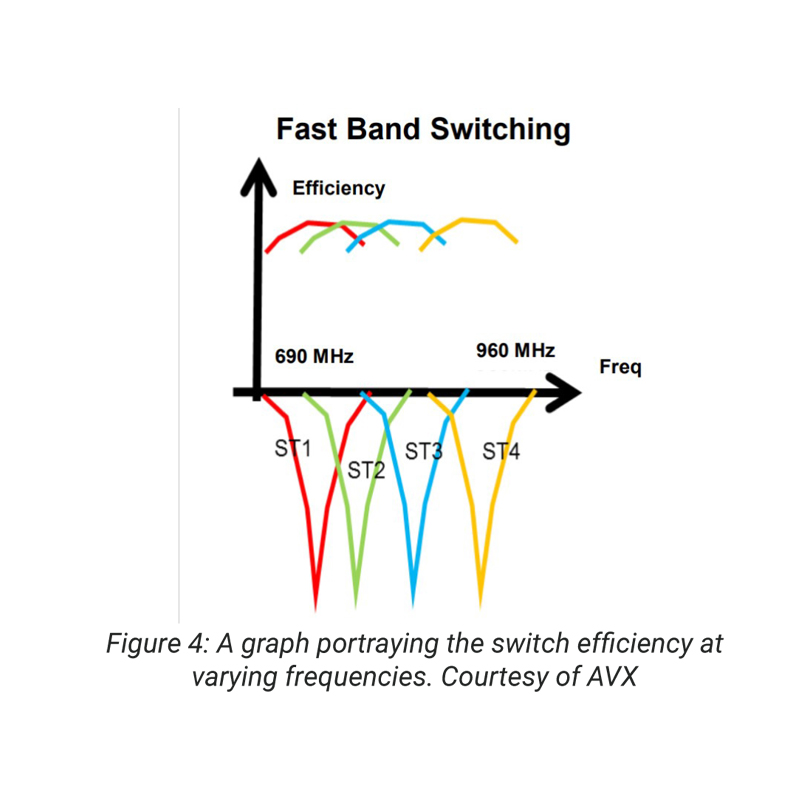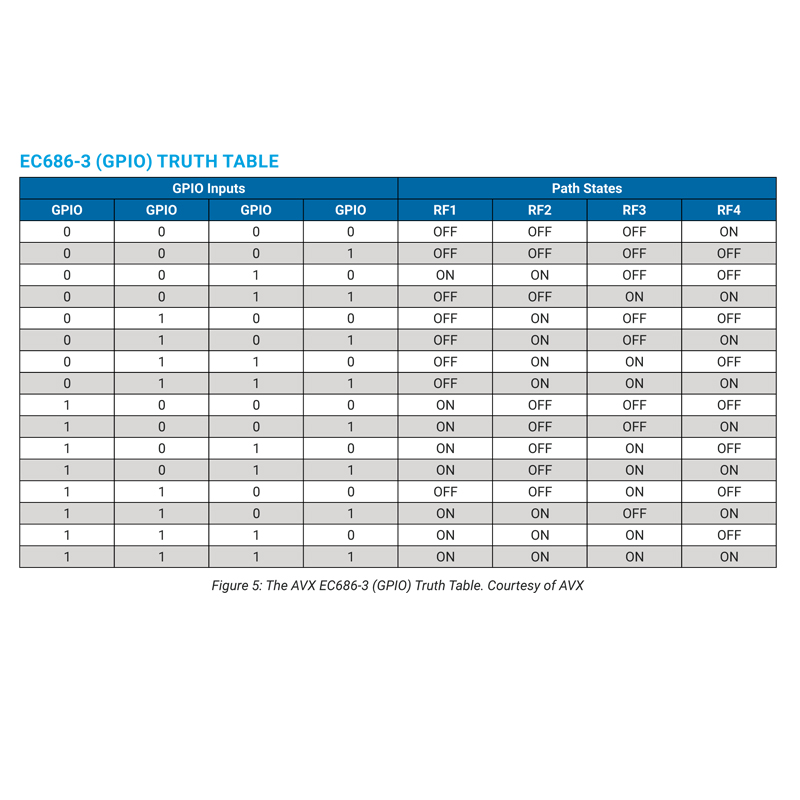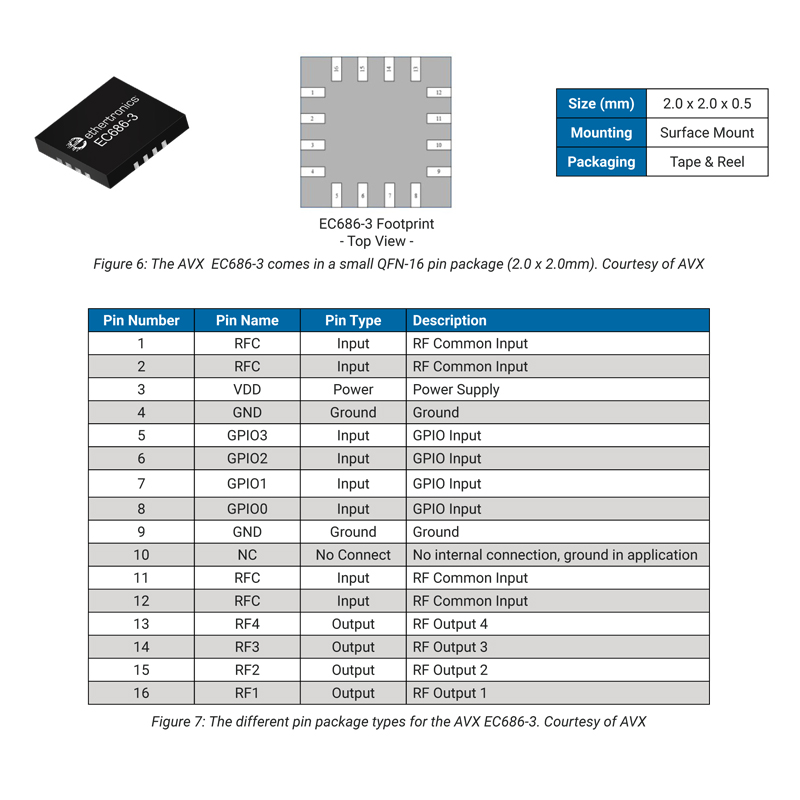Active Band Switching Solutions
Today’s new and emerging wireless applications are increasingly requiring the support of multiple frequency bands.
From laptops to cellular phones to wearables, devices are expected to connect to any cellular, Bluetooth™, GSM, RFID, or other networks. These expectations present challenges when it comes to antenna design, compared to a traditional design.
The simplest solution — using discrete antennas for each frequency band required in the application — requires extra physical space. But this ultimately clashes with industry trends that prefer smaller and smaller solutions while still providing more bandwidth.
So another solution is called for — active band switching. Active band switching permits a single antenna element to be used by actively modifying it to work for different frequency bands on demand. It also permits active tuning to improve RF performance.
Methodology: Band Switching or Aperture Tuning
Antennas are crucial for reliable radio connections. Good antenna design matches the antenna's electromagnetic radiating mechanism to the frequency band from the transmitting circuitry. A mismatch between the antenna design and the transmitter or receiver's desired frequency band will render the radio useless or unreliable.
Active band switching is when the antenna's resonant frequency switches between different frequency bands, which is beneficial for devices that require a radio to operate across multiple frequency bands but only have the size and space for one antenna.
Band Switching with AVX EC686-3
This technique can be implemented using the AVX EC686-3 RF switch with Ether Switch & Tune™ technology.
The EC686-3 provides a broader global band coverage (including LTE) with a single antenna element. It achieves this by using parasitic loading and active tuning techniques, especially to meet the stringent low band (LTE) antenna efficiency requirements.
Combining extensive antenna systems expertise and proprietary algorithms, the EC686-3 seamlessly adjusts the characteristics of a wireless antenna to:
- Cover all 2G/3G/4G cellular, Bluetooth(R), GSM, ISM, and RFID bands
- Retune the antenna for frequency shifts
- Reduce the antenna's physical volume by up to 50%, without performance tradeoffs
- Help to avoid high losses from the switch due to low on-resistance (RON)
Key Benefits
- Operational Frequency
- 100 MHz to 3000 MHz
- RF Switch
- SP4T (shunt less architecture)
- Ultra-low RON (900 mΩ)
- Exceptional linearity (IIP3 +80 dBm)
- Flexible Control Interface
- GPIO
- Small Package
- Total package size is 2.0 x 2.0 x 0.5mm3
- Package type is QFN 16-pin
- Environmental Compliance
- RoHS2 Directive 2011/65/EU REACH Substances of Very High Concern (SVHC) regulation (EC) No 1907/2006
Band Switching: Software Requirements
Active band switching requires software for implementation. Thankfully, the implementation is not complicated or challenging, so that it can be accomplished with minimal resources.
The EC686-3 must be connected to the application processor using 2 or 4 GPIOs, depending on how many states are needed. There are two possibilities:
1) The network carrier is known - In this case, the frequency band can be found in a pre-loaded matrix, and the EC686-3 configuration can be chosen according to a Look-Up Table (LUT), which contain the optimum EC686-3 configuration for each band. This LUT is defined by AVX during the development process.
2) There is no favoured carrier - In this case, a first configuration of the EC686-3 can be chosen on power-up, and then a full scan is done to find the available network.
- Once the network has been identified, the frequency band can be found within a pre-loaded matrix. The EC686-3 configuration can then be chosen according to a Look-Up Table (LUT) that contains the optimum EC686-3 configuration for each band.
- If no network is found, then the next configuration for the EC686-3 is chosen, and the process starts again.
Packaging and Pinout
The AVX EC686-3 comes in a small QFN-16 pin package (2.0 mm x 2.0 mm) and is RoHS and REACH compliant. The small size and wide temperature range (-40°C to 85°C) make the EC6866-3 ideal for cellular phones, tablets, and other handheld wireless devices.
See Figure 6 for image and Figure 7 for full pinout table
AVX EC686-3 Industry-Leading Solutions
The AVX EC686-3 offers an industry-leading device for active band switching.
Small and simple, the part allows for a compact design that enables multiple RF bands with a single antenna, with minimal software development required.
AVX is a leading supplier of antenna solutions (active and passive) for industrial, commercial, automotive, and medical applications.
AVX antennas provide enhanced throughput/speed, spectral efficiency, reliability, and performance.
Downloads
AVX & DMTL
Technical paper written by Alessandro Beretta at AVX Corporation.
DMTL have enjoyed an extremely close and successful relationship with AVX for over 30 years and are fully franchised, authorised AVX distributors.
Commencing as a direct customer in 1988, DMTL was then appointed as AVX UK Design Distributor in 1996.
Of note is the fact that for the last 5 years, DMTL has continued, by some margin, to be AVX’s Top Design Distributor for the UK, by value, each year.. This being a clear indicator of the strength of AVX’s technical support, in their partnership with DMTL.

